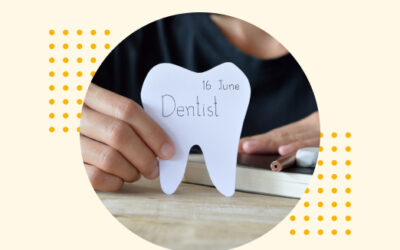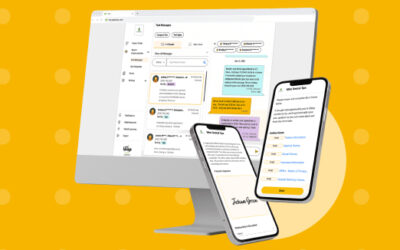
Following up on the past due patients is often the most dreaded, yet an essential task for running a healthy general or pediatric dental practice.
An effective recall program fills the schedule for both the dentist and the dental hygienist and allows our patients to maintain optimal dental health. It also helps you maintain a relationship with them so that they keep coming back and referring others.
Open hygiene chair time is costly as the lost time and revenue can never be recovered. And it’s a wasted opportunity to fill the dentist’s schedule. A lost hour today translates into thousands of dollars lost tomorrow and in the following years.
Keep in mind that the more time goes by since their last dental appointment, the less likely your patients are to return to your practice. After a while, they may stop thinking of you as their dentist and be tempted to try someone new. Or they may be simply embarrassed to return just to be scolded for not being consistent with their recall or their flossing.
Of course, we all know this, and yet, most dental practices have a long list of lost patients that’s growing cold. Proactive outreach to our past due patients is the one task in many practices that the dental team members either procrastinate on or avoid altogether.
We dislike making these calls because:
- It’s time-consuming. Our team members are already busy juggling patients, incoming calls, insurance, and other daily activities. Finding enough the time to get in touch with every patient can be difficult.
- Some patients are hard to reach. Everyone is busy and, while almost every one of our patients has a mobile phone, answering the phone is not always our patients’ top priority.
- It’s not fun. Let’s face it, many of our patients are not looking forward to visiting a dentist, and often come up with a variety of excuses to avoid scheduling an appointment.
- We don’t know what to say. We all dislike doing things that we are not good at and making calls to past due hygiene patients is no exception.
So how can we keep our schedule full and spend as little time as possible on these dreaded calls?
1. Get The Low Hanging Fruit
Make it easy for your team to remind patients when they become due for hygiene and make it easy for your patients to schedule their appointments.
Many of us run around with an ever growing task list but never find the time to do something as simple as calling the dentist to schedule an appointment. Automated text and email reminders help dental practices to gently nudge their patients to schedule with minimum effort and no interruptions. With the convenience of two-way text messages, email, online scheduling, and appointment bots, even the busiest of patients can find the time to schedule and confirm their dental appointments.
The key here is repetition and consistency. Sometimes, patients do not respond to the first or even the second message because the timing isn’t right for them. Continue to reach out to your patients with a series of well-written variable messages to increase your success with this strategy.
2. Use Technology To Reach Patients Where They Are
Patients of all ages are becoming more tech-savvy and rely on technology to stay connected to their families, friends, and vendors. An overwhelming majority of patients indicate that they want an easier way to connect to their healthcare providers.
Smart technology allows you to contact your patients when, where, and how they want to be reached. So, put your technology to good use! It will not only increase their response to your messages, it will also improve their satisfaction with your practice. While some patients may prefer to communicate with the practice via text in real time, others prefer the convenience of an email so that they can respond to your messages when the time is right for them. It’s a good idea to find out how your patients prefer to be contacted and document their preference in your practice management or communication software.
-
With YAPI’s True Two-Way Texting, communicate with your patients as if you were texting from a mobile phone. Fill last minute schedule openings by texting patients that need an appointment. They can instantly and conveniently respond if they can come in!
3. Don’t Let Patients Leave without an Appointment
Schedule your patients for their next appointment before the bib comes off. The best time to set the next appointment is right as patients are enjoying that “just had my teeth cleaned” feeling and before they get to the front door.
You may worry that patients will balk at the idea of scheduling far in advance. To ensure commitment, use this language: “Let’s get you scheduled now. Does this time usually work for you? It’s one of our most popular times and books up quickly, so let’s reserve your spot today. Don’t worry, we’ll send you a reminder in advance, and you can always call or text us if you need to make a change.”
Keep in mind that you should not pre-appoint 100% of your patients; shoot for 80%. The Pareto Principle, or “80/20 Rule” as it’s called today, states that roughly 80% of the effects come from 20% of the causes. Applied to our schedule, it means that 80% of our cancellations come from 20% of the patients. Do not book patients with a history of broken appointments far in advance – these are the same patients who are most likely to cancel last minute in the future. Instead, let them know that they will receive an email or mobile text message reminder to schedule.
A useful tool is to watch out for a Missed Appointment History Alert next to their Avatar on YAPI Dashboard that looks like this: …
Because these patients have a harder time to making a long-term commitment, they are the best group of patients to contact when you have a last minute opening on the schedule.
- If you use YAPI you can follow these three simple steps to quickly fill last minute openings in your schedule. 1. Locate your patients that need a hygiene appt. 2. Search for family members with recall due 3. Consult your YAPI ASAP List. For the full article and step by step process, please read here.
4. Get on the Phone!
If you have patients who have received your automated texts, emails, and postcards but still didn’t schedule, it’s time to get on the phone. We are in the business of building relationships and relationships cannot be completely automated. They require human contact. So, automate the low-hanging fruit but continue to reach out to patients in person.
Some patients may have a reservation about coming back that needs to be addressed promptly: they might have experienced a problem at their last visit or didn’t have their questions about recommended treatment answered clearly. Others may have lost their dental coverage and are unaware of your dental savings program. Whatever their reservation or concern is, it should be dealt with quickly. The sooner you get them on the phone, the more likely you are to re-establish your relationship and get them back into the practice.
5. Get Them While They Are Hot
The best time to call your past due patients is right after they received your automated reminder. We typically recommend following up with a phone call 2 to 7 days after an automated reminder was received.
Many patients receive a reminder and make the decision to schedule but, for one reason or another, they get busy or simply forget to call. These patients will welcome your call because it takes one more thing they have to do off their plates: “Wow, I was just going to call you! Do you have anything this Friday?”
6. Get Organized
Most practices have long lists of unscheduled patients and organizing a systematic recall effort may be a daunting task. What is the right number to call daily? How do we keep track? How can we keep our team members accountable? If multiple team members make calls, how do we share the list without duplication of effort?
A good recall system that organizes your recall efforts will solve all these problems. Filtering unscheduled patients by those who received an automated messages within 2-7 days is a good way to create a short action list of patients to call today. If your team has a goal of reaching everyone on their short list and generates a fresh list daily, you will have a good system to make sure that you reach everyone at the right time. This list should be easy to generate, be readily available to everyone in the practice, and allow team members to make notes and schedule follow-up calls.
7. Learn to Recognize and Handle Objections
Sandy Pardue, a renown practice management consultant, says: “Practices have more control than they realize.”
How can we gain more control? The answer is simple – train your team! Help your team learn the verbal skills to navigate difficult conversations, ask the right questions, and handle objections. When your team is empowered with strong verbal skills, when they are prepared to address even the most sensitive issues, and when they feel confident that they can take control of every conversation, they begin to feel differently about these calls. They actively reach out for the phone, schedule patients successfully, and enjoy talking to patients.
Read more from Sandy Pardue here




